My My Hey Hey Out Of The Blue Into The Black With A Cortez Killer Cinnamon Girl
My My Hey Hey (Out Of The Blue) Album: Rust Never Sleeps (1979)
Hey Hey, My My (Into The Black) Album: Rust Never Sleeps (1979)
Cortez the Killer Album: Zuma (1975)
Cinnamon Girl Album: Everybody Knows This Is Nowhere (1969)
Neil Young & Crazy Horse
Young alludes to three specific artists in the lyrics of My My Hey Hey (Out Of The Blue):
"Rock and roll is here to stay" - This is the title of a 1958 song by Danny & the Juniors, a vocal group best known for their hit "At The Hop." They proclaim, "Rock 'n roll is here to stay, it will never die."
"The king is gone but he's not forgotten" - "The King" is Elvis Presley, who died in 1977, two years before this song was released.
"This is the story of a Johnny Rotten" - Johnny Rotten (real name: John Lydon) was lead singer of punk rock pioneers The Sex Pistols. He often seemed hell-bent on self destruction to ensure he would burn out and not fade away, but ended up having a very long and productive career.
Around 1977 Neil Young formed a band called The Ducks that included Jeff Blackburn. The band played for a $3 cover charge in the hip Santa Cruz club environment. "My My, Hey Hey (Out Of The Blue)" came out of this period and Jeff Blackburn received co-writing credit on the track with Young.
Jeff Blackburn recalled to Uncut magazine: "We were old friends going back to the '60s. I was playing in Santa Cruz with John Craviotto and Bob Mosley (Moby Grape) who were a great rhythm section, when Neil ducked into it. That was a great summer. We played about 30 shows with The Ducks, we played every night. It really was a mighty month.
Neil and I swapped ideas. We both had material, we had ideas and things came together as we were rocking together pretty good. I had a song with the line, 'Ashes to ashes, dust to dust. It's better to burn out than it is to rust.' Neil liked that and the whole rust thing came from that line - rust never sleeps. Not many people share a credit with Neil Young. It's hard to say why I got one, you'd need to ask Neil. But you never know what he's going to do next."
Young released two versions of the song on the album: an acoustic rendition called "My My, Hey Hey (Out Of The Blue)," and an electric version called "Hey Hey, My My (Into The Black)" that he recorded with his band, Crazy Horse. Both versions were included on the single, with "Hey Hey, My My" the A-side, which is what most radio stations play. The electric version has slightly different lyric and omits the famous line, "It's better to burn out than to fade away."
"My My, Hey Hey" is on the first side of the album, which is all acoustic.
My My Hey Hey (Out Of The Blue) was the first track on Rust Never Sleeps. Young released a concert documentary with that title the same day as the album.
Kurt Cobain's suicide note contained a line from My My Hey Hey (Out Of The Blue): "It's better to burn out than to fade away." That line has become one of the most famous song lyrics of all time. When Young was asked by Time magazine in 2005 about the line and Cobain's death, he said: "The fact that he left the lyrics to my song right there with him when he killed himself left a profound feeling on me, but I don't think he was saying I have to kill myself because I don't want to fade away. I don't think he was interpreting the song in a negative way. It's a song about artistic survival, and I think he had a problem with the fact that he thought he was selling out, and he didn't know how to stop it. He was forced to do tours when he didn't want to, forced into all kinds of stuff. I was trying to get a hold of him - because I had heard some of the things he was doing to himself - just to tell him it's OK not to tour, it's OK not to do these things, just take control of your life and make your music. Or, hey, don't make music. But as soon as you feel like you're out there pretending, you're f--cked. I think he knew that instinctively, but he was young and he didn't have a lot of self-control. And who knows what other personal things in his life were having a negative impression on him at the time?"
Def Leppard used the burn out/fade away line at the beginning of their song "Rock of Ages."
This was included on Live Rust, a concert album recorded later that year. Young performed these concerts with giant amps and microphones on stage as props.
A line from this song, "rust never sleeps," was used as the album title. Young got the line from Mark Mothersbaugh, who is a member of the band Devo.
Neil Young performed My My Hey Hey (Out Of The Blue) as a duet with Devo and Booji Boy in his movie Human Highway. The full duet is about twelve minutes, and takes place during a hallucination scene in the movie. The movie itself is only good as a B-grade movie, but the live footage of Devo in costume and Neil Young together is worth the price on the video.
In the 1986 movie Highlander, the villain Kurgan quotes this song to people inside a church: "I have something to say! It's better burn out, than to fade away!" By this he means to glorify his ongoing perilous battle for immortality as opposed to living a normal humble life. This is quite an obvious metaphor for being a rock star.
The song explicitly deals with the struggles of being a rock musician. As quoted on Hyper Rust, Neil Young said, "The essence of the rock'n'roll spirit to me, is that it's better to burn out really bright than to sort of decay off into infinity. Even though if you look at it in a mature way, you'll think, "well, yes ... you should decay off into infinity, and keep going along." Rock'n'roll doesn't look that far ahead. Rock'n'roll is right now. What's happening right this second"
Stephen King quoted the lyric "Out of the blue and into the black" in the epigraph to his 1986 horror novel, It. In the story, an evil entity disguised as a clown emerges from hibernation every 27 years to terrorize the town of Derry, Maine. In the film adaptation's 2019 sequel, It Chapter Two, King makes a cameo appearance as a shopkeeper who wears a Neil Young Harvest Moon T-shirt. Director Andy Muschietti told the Dutch online newspaper NU.nl he was surprised when the author seemed annoyed by the garment. King, who was in the midst of a cocaine addiction when he wrote It, said he wasn't really a Neil Young fan and was probably high when he quoted him in the novel.
Hey Hey, My My (Into The Black) is an alternate version of Young's song "My My, Hey Hey (Out Of The Blue)," which also appears on the Rust Never Sleeps album. The lyrics are slightly different, and "Hey Hey, My My" is electric, while "My My, Hey Hey," is acoustic.
Young recorded this with the band Crazy Horse. It was the first time Young recorded with them since Zuma in 1975.
In the biography of Neil Young, Shakey by Jimmy McDonough, Neil points out that this song came about when he was jamming with the band Devo. The phrase "rust never sleeps" was uttered by Mark Mothersbaugh, and Neil, loving the impromptu line, acquired it. >>
The lyrics refer to "The King" and Johnny Rotten as rockers whose legacies live on. The King is Elvis Presley, and Johnny Rotten was the lead singer of The Sex Pistols.
In The Complete Guide to the Music of Neil Young, Young explains why the line "rust never sleeps" appealed to him. "It relates to my career; the longer I keep on going the more I have to fight this corrosion. And now that's gotten to be like the World Series for me. The competition's there, whether I will corrode and eventually not be able to move anymore and just repeat myself until further notice or whether I will be able to expand and keep the corrosion down a little."
Hey Hey, My My (Into The Black) is the last song on the electric side of Rust Never Sleeps. The first side (first five songs on the CD) are acoustic.
The song has become a standby of Young's live performances, being played at nearly every live show throughout his career, often as a closing song.
John Lennon expressed his disagreement with the "burn out or fade away" sentiment in a 1980 interview with Playboy: "I hate it. It's better to fade away like an old soldier than to burn out. If he was talking about burning out like Sid Vicious, forget it. I don't appreciate the worship of dead Sid Vicious or of dead James Dean or dead John Wayne. It's the same thing. Making Sid Vicious a hero, Jim Morrison - it's garbage to me. I worship the people who survive." Young responded to the quote, saying that he was describing the paradoxical nature of the rock-and-roll lifestyle, not advocating it.
Cortez the Killer is about Hernán Cortez, the Spanish conqueror of the Aztec Empire. The Aztecs lived in what is now considered Mexico, and Cortez had an army of 600 sail from what is now Cuba to the Aztec town of Tobasco (yes, where the hot peppers and the name of the sauce originally came from). The Aztecs thought Cortez was a god and bowed before him. They let his army roam free. Cortez, however, became wary of their good nature and took their leader hostage. He then captured and killed many of their people. He also unwittingly brought new diseases to the Americas, which the natives had no immunities towards. On top of all this, he built what is now Mexico City with slave labor. He returned to Spain a hero.
Neil Young's Cortez the Killer brings an interesting alternative viewpoint to the history of Cortez' invasion. While not a complete history of Cortez or the Aztecs, it's title alone gives you a very good idea of how Young viewed the invasion. Young's romantic imagery near end of the track highlight the emotional toll (lost romance, etc.) of the invasion.
Peace is a theme of this song. From verse six: "But they built up with their bare hands, what we still can't do today" indicates that even in the most barbarian times there was still peace, and in present day, as sophisticated as it may be, there is anything but peace. The Aztecs were peaceful, representing sort of a utopian nonviolent society. Cortez and the Spanish brigade used trickery to beat the Aztecs, people who had never committed any offensive acts towards the Spanish. The Spanish could represent the status quo society, completely antonymic from the amicable Aztecs.
Neil Young's ex-wife Pegi is also a singer/songwriter. When we spoke with Pegi and asked how personal experiences inspired her songs, she told us: "I think there's little kernels of our lives in many of our songs, unless you're writing 'Cortez' or something. It must have been in another life my husband was an Incan warrior."
The last verse of Cortez the Killer switches from a third to a first-person perspective, characterizing the faceless, historical figure of Cortez into someone romantically pining for an unnamed somebody: "And I know she's living there, and she loves me to this day. I still can't remember when or how I lost my way." Since the song was written around the time of his split with wife Carrie Snodgress, there's speculation that it's at least partially autobiographical. However, when Jimmy McDoncough, author of the young biography Shakey, questioned the singer about this, Neil simply said: "Its not about information. The song is not meant for them to think about me. The song is meant for people to think about themselves. The specifics about what songs are about are not necessarily constructive or relevant. A lot of stuff I make up because it came to me."
Cortez the Killer fades out after around seven and a half minutes. According to Neil's father in the book Neil and Me, this was because an electrical circuit had blown, halting the recording process. This caused a final verse to be lost; Neil, however, opined that he "never liked that verse anyway." While an official recording of the lost verse was never released, the singer added the lines, "Ship is breaking up on the rocks. Sand beach... so close" to the end of the song while on his 2003 Greedale Tour.
This song has one of the longest intros in rock: Young's vocals done come in until 3:22.
During a show in Manassas, Virginia on August 13, 1996, Young told the audience that he wrote this song after eating too many hamburgers in high school. "One night I stayed up too late when I was goin' to high school. I ate like six hamburgers or something. I felt terrible... very bad... this is before McDonald's. I was studying history, and in the morning I woke up I'd written this song."
The song's slow, rambling vibe was partly down to rhythm guitarist Frank Sampedro's drug use. Sampedro recalled to Uncut: "When we recorded 'Cortez,' I had just smoked some angel dust. The whole song I thought the second chord, D, was the first chord. So I emphasized that every time round, while Neil was leaning on the first chord, E minor. I think that helped keep a really slow tune moving along."
Young has never said who the Cinnamon Girl is, as he prefers to leave lyric interpretations to the listener. In the liner notes of his Decade compilation, he stated: "Wrote this for a city girl on peeling pavement coming at me thru Phil Ochs eyes playing finger cymbals. It was hard to explain to my wife."
Phil Ochs was a folk/protest singer active in the '60s who had issues with his mental stability (although his paranoia about the FBI turned out not to be far off). Young's wife at the time was Susan Acevedo; they were married for just one year at this point.
Though Young would not identify his muse, the bit about finger cymbals is a reference to '60s folk singer Jean Ray, who performed with then-husband Jim Glover under the name Jim and Jean. Phil Ochs, a close friend of a couple, penned the title song to their second album, Changes.
Brian Ray, Paul McCartney's guitarist and Jean's younger brother, claims Cinnamon Girl is indeed about his sister. Jean, herself, said she inspired another Neil Young song from the Everybody Knows This is Nowhere album: "Cowgirl in the Sand."
In the book Shakey, Young copped to having a crush on Ray. When asked if she is the Cinnamon Girl, Young said, "Only part of the song. There's images in there that have to do with Jean and there's images that have to do with other people."
Young recorded this with his band Crazy Horse. It was originally released on the Everybody Knows This Is Nowhere album in 1969. Young put out an alternate version as a single in 1970, which did well partly because he was getting exposure as a member of Crosby, Stills, Nash, and Young.
In Neil Young: Long May You Run: The Illustrated History, Neil Young talked about poaching the band The Rockets for the formation of Crazy Horse, who he first recorded with on Everybody Knows This Is Nowhere: "The truth is, I probably did steal them away from the pother band, which was a good band. But only because what we did, we went somewhere." He later goes on to say, "That's the hardest part, is the guilt of the trail of destruction that I've left behind me."
In the same work, it is also mentioned that "With songs such as 'Cinnamon Girl,' 'Down By The River,' and 'Cowgirl in the Sand,' Crazy Horse clearly gave Neil Young the kind of sympathetic and almost telepathic backing he needed." Neil Young went on to declare Crazy Horse "the American Rolling Stones."
The band Type O Negative did a remake on of Cinnamon Girl their 1996 album October Rust. The song was also covered by Smashing Pumpkins on the Reel Sessions bootleg.
That's Danny Whitten singing high harmony on this this song with Young. Whitten was a singer/guitarist in Young's backing band Crazy Horse, which released its own album in 1970 featuring a few Whitten compositions, including "I Don't Want To Talk About It," later a #1 UK hit for Rod Stewart. Whitten spent his last years battling a heroin addiction, and in 1972 died after overdosing on alcohol and Valium.
The liner notes to Decade reveal that "Down by the River," "Cinnamon Girl," and "Cowgirl in the Sand" all in a single afternoon - while sick with a 103 degree temperature. Also, they were recorded after being together with the band Crazy Horse for only two weeks."
Crazy Horse bassist Billy Talbot recalled to Uncut magazine in 2021: "What I remember about 'Cinnamon Girl' is the four of us playing it - me, Ralph (Molina), Danny (Whitten) and Neil and realizing, 'Oh yeah, we can do this.' There's Danny's guitar, there's Neil's voice and guitar, and Ralph and I just need to keep the beat.
When you are inside a song like that, it's something beautiful. It sounded good and I liked it, then we got to the bridge and I loved it! We were able to get very psychedelic; we could slow it down and it got bigger and even more beautiful. I don't think we worked on it for long, we really did just play it once or twice before we got the take."
When legendary British DJ "Whispering Bob" Harris made his BBC Radio 1 debut on the August 19, 1970 episode of Sounds of the Seventies, "Cinnamon Girl" was the first record he played.
In 2020, a video appeared on YouTube showing Young encountering a fan in a public park. Using the fan's guitar, he gives a brief tutorial on how to play "Cinnamon Girl."
-
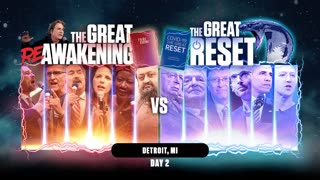 LIVE
LIVE
The Amber May Show
11 hours agoReAwaken America Tour Detroit, MI - DAY 2 | Join General Flynn, Eric Trump, Kash Patel, Mayor Giuliani & Team America + Request Tickets for October 18-19 Selma, NC At: TimeToFreeAmerica.com
1,418 watching -
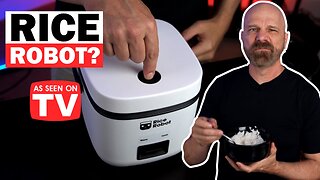 12:23
12:23
Freakin' Reviews
1 day agoRice Robot Review: One-Touch Rice Cooker? | As Seen on TV
73.8K30 -
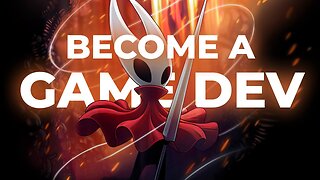 5:45
5:45
Game Developer
1 day agoHow To Become A Game Dev (While Working A Full Time Job)
67.4K15 -
 4:16
4:16
ryanhoguepassiveincome
1 day agoElevate Amazon Ads brand content with your Brand Store
67.1K6 -
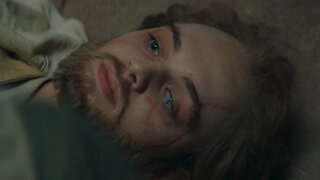 16:19
16:19
RealReaper
1 day agoThe Acolyte Is Unwatchable
60.4K53 -
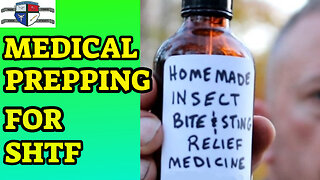 11:29
11:29
Ethical Preparedness
21 hours ago2 EASY Ways: Make Insect Bite & Sting Medicine - Medical Prepping for SHTF - Natural Medicine
66.9K12 -
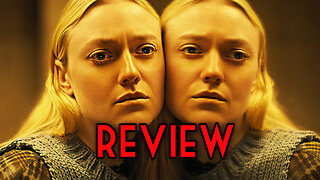 15:52
15:52
JoBlo Horror Originals
1 day agoThe Watchers Review: Shyamalans Sure Do Love Their Twists
65.7K6 -
 31:49
31:49
MichaelBisping
1 day agoBISPING & ANIK: Is Conor McGregor INJURED?! | Who Could Replace Him? | What's next for Poirier?
64.9K9 -
 16:00
16:00
Space Ice
1 day ago'Resident Evil: Retribution' Is So Bad It's Like Looking Into A Mirror - Worst Movie Ever
62.6K19 -
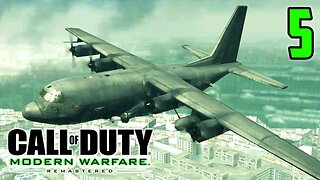 23:59
23:59
Degenerate Plays
23 hours agoThe Denny's Dictator Impresses Women - Call Of Duty Modern Warfare Remastered : Part 5
43.2K1